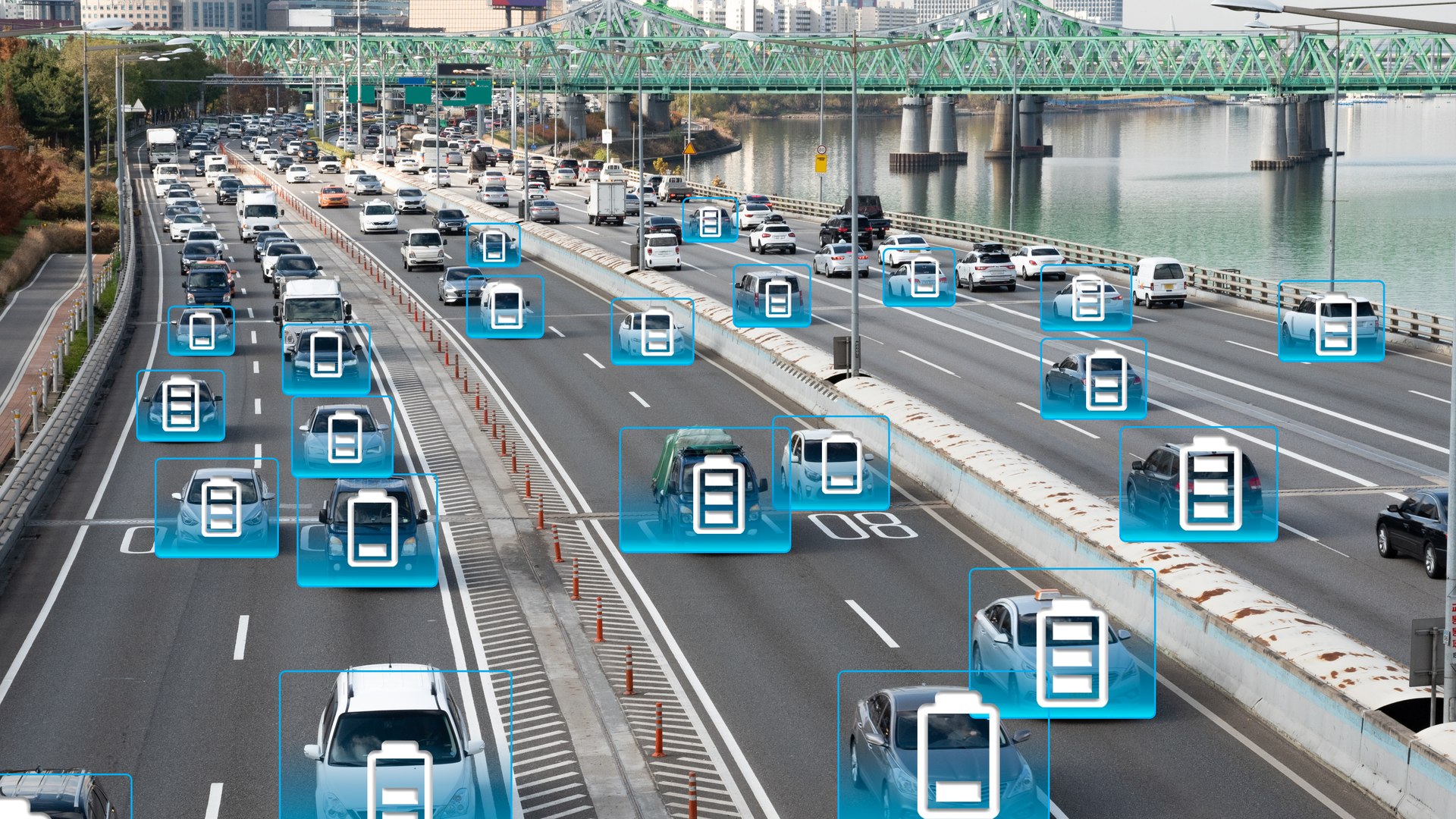5 Points on Power When Planning EV Charging Networks

Planning Electric Vehicle Charging Networks? Remember these Five Points on Power
In an effort to slash tailpipe emissions, state transportation departments (DOTs) are working hard to accelerate electrification of travel and transport through policy, investment, and incentives. To support build-out of electric vehicle (EV) charging networks, the U.S. needs more charging stations and adequate electrical power in the “right” locations. As state DOTs begin to develop their EV charging plans, Black & Veatch recommends they consider these five points on power.
Understand Demand for On-Site Electric Power: Understanding the daily power requirements of charging is essential. In transit, multimegawatt sites are common, which generates big energy demand. As a point of reference, a fleet of 56 buses would require roughly 11 megawatt hours (MWh) per day; a fleet of 542 could demand around 109 MWh/day. NREL estimated that a six-port station with 350-kilowatt (kW) chargers (per-port) could result in a peak demand of 2.1 MW of electricity if six cars charged at the same time.
Plan (Way!) Ahead for Potential Power Upgrades: New charging loads may require upgraded or new utility feeders, substation modernization and even new substations. Engineering, design and construction scopes become more substantial with increasingly complex upgrades, which affects deployment cost and schedule. For example, a 1-MW charging site could require a new service transformer, which could take three months to complete. A 2-MW site could require grid and services upgrades, which could take 18 months to complete. The rule of thumb is to plan way ahead to be on time.
Remember Renewables: Decarbonization is an opportunity to benefit from a holistic view of mobility―one that includes energy generation and sourcing. Microgrids integrate clean, resilient, efficient and secure on-site power generation and energy storage, which helps offset energy costs and contributes to sustainability goals. The addition of high-power charging load and distributed energy resources will typically require equipment upgrades to grid elements and building facilities. Building retrofits require electrical and utility interface planning, cooling design and space for equipment.
Utility Coordination and Permits: State DOTs will benefit from starting utility engagement as early as possible in the design process. Utility coordination is facilitated by strong existing relationships and knowledge of utility engineering and business practices. DOTs that work with a technology integrator with these attributes, like Black & Veatch, can often accelerate utility design and service delivery for high-power charging. During this phase, DOTs and their technology integrators will work with host utilities to develop power delivery roadmaps that leverage utility programs and charging rates. Calculated savings based on future charging loads will be incorporated into the planning process.
Future-Proof Power: When planning, consider growth over five to 10 years (and longer) to anticipate power capacity for a facility. While charging technology will continue to advance, it is most cost-effective to plan for and install anticipated on-site infrastructure (like conduit and switch gear) and make room for transformers, energy storage and utility interconnections during initial construction versus down the road, which requires costly rework construction.
Conclusion
Massive industry investment, government incentives and advances in EV technologies generate market confidence and help spur a transition to clean transportation. But energy and transportation resilience and autonomy require well-designed EV charging facilities. As long-term investments, charging facilities are intended to be enduring energy and telecommunications networks that support unique transportation and resilience missions even as technology evolves over time. With the right insight, state DOTs will build facilities for today and tomorrow, with better outcomes in design, costs and timeframes.
Contact Us
Looking for a partner in innovation?
Let's Talk
